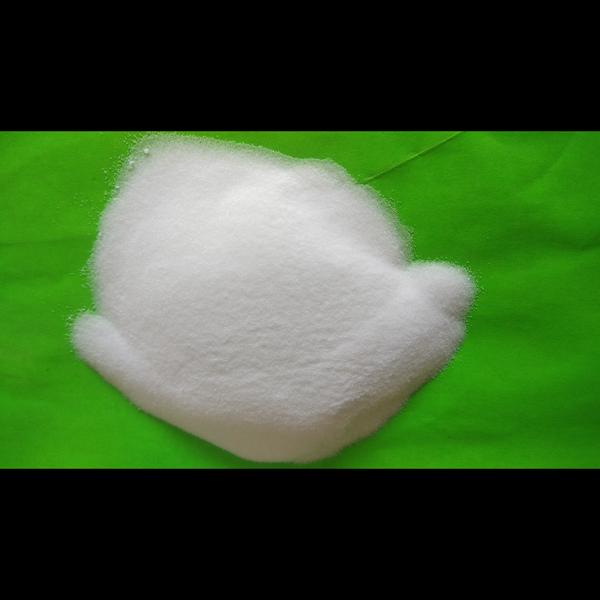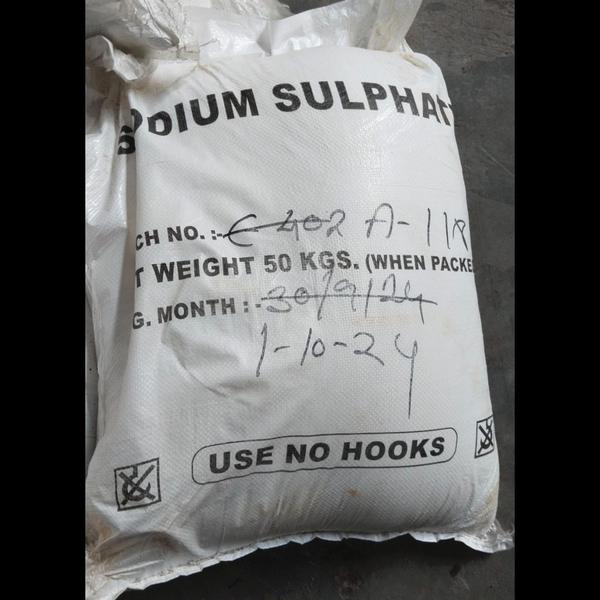🌟 Ammonium Sulphate – Comprehensive Chemical Insight
Ammonium sulphate, chemically denoted as (NH₄)₂SO₄, is a white, crystalline, inorganic compound known primarily for its use as a highly efficient nitrogenous fertilizer. In addition to agriculture, it finds utility in industries ranging from pharmaceuticals to water treatment and laboratory applications. Let’s delve deeper into its properties, structure, uses, and handling.
🔹 Chemical Profile
Molecular Formula: (NH₄)₂SO₄
Molecular Weight: 132.14 g/mol
IUPAC Name: Ammonium tetraoxosulphate(VI)
Structure: It comprises two ammonium ions (NH₄⁺) and one sulfate ion (SO₄²⁻) held together via ionic bonding.
🔸 Physical Properties
Property Description
Appearance White crystalline solid or granules
Odor Odorless
Taste Saline, slightly acidic
Solubility Highly soluble in water (approx. 70 g/100 mL at 20°C); insoluble in alcohol and acetone
Density 1.77 g/cm³
Melting Point Decomposes at ~235–280°C; does not melt cleanly
Thermal Stability Stable at room temperature; decomposes at high heat releasing ammonia and sulfur oxides
🔸 Chemical Properties
Dissociation in Water:
(
𝑁
𝐻
4
)
2
𝑆
𝑂
4
→
2
𝑁
𝐻
4
+
+
𝑆
𝑂
4
2
−
(NH
4
)
2
SO
4
→2NH
4
+
+SO
4
2−
pH of Solution: ~5.5 to 6.5 (slightly acidic)
Reacts With:
Strong bases → liberates ammonia gas (NH₃)
Calcium salts → forms calcium sulphate precipitate (CaSO₄)
Combustibility: Non-flammable
Corrosiveness: Non-corrosive to metals but can accelerate rusting in moist conditions
🔸 Forms & Grades Available
Crystalline Powder – For laboratory or small-scale agricultural use
Granular Fertilizer Grade – For direct field application, easier handling
Food & Pharma Grade – Higher purity, low heavy metal content
Caprolactam Grade – Derived from caprolactam byproducts, used in industrial processing
🌾 Agricultural Significance
Ammonium sulphate is a dual-purpose fertilizer, providing both nitrogen (21%) and sulfur (24%) — two essential macronutrients for plant health. It plays a vital role in:
Enhancing leaf development and chlorophyll production
Stimulating protein synthesis and enzyme activity
Improving flavor and quality of crops like onion, garlic, oilseeds, and leafy greens
Acidifying alkaline soils and improving nutrient uptake
Aiding in early crop development when applied as a starter fertilizer
Application Methods:
Broadcasting (pre-sowing)
Fertigation (with irrigation water)
Foliar spray (diluted solution)
Side dressing (around plant base)
🧪 Industrial and Technical Applications
While agriculture is the dominant sector, ammonium sulphate also finds wide industrial usage:
1. Laboratory Use
Precipitating agent in protein purification (salting out)
Source of nitrogen in microbial culture media
2. Pharmaceutical Industry
Component in some intravenous fluids and topical formulations
Used in buffer solutions and crystallization processes
3. Food Processing (E517)
Approved food additive for yeast fermentation and dough strengthening
Common in bakery industries under strict dosage limits
4. Textiles & Leather
Used in dye-fixation processes and tanning baths
5. Water Treatment
Applied as a coagulant aid to remove contaminants and soften hard water
6. Explosives & Mining
Combined with fuels or nitrate-based materials in ANFO-type explosive mixes (in specific technical-grade uses)
🌿 Environmental Impact & Soil Chemistry
Ammonium sulphate contributes to both plant nutrition and soil modification:
Benefit Explanation
Acidifies alkaline soils Releases H⁺ ions during nitrification
Reduces soil pH Improves uptake of phosphorus, iron, and zinc
Low Volatilization Losses Unlike urea, less ammonia loss in open fields
Compatible with Micronutrients Can be blended with boron, zinc, etc.
However, over-application may lead to:
Soil acidification beyond optimal range
Nitrogen leaching in sandy soils
Risk of eutrophication in nearby water bodies
🧯 Safety & Storage
Aspect Description
Health Hazards Non-toxic in agricultural use; mild eye/respiratory irritation from dust
Ingestion Low toxicity, but not suitable for consumption in raw form
Storage Store in dry, cool, ventilated areas away from strong alkalis
Packaging Typically packed in 25kg/50kg HDPE bags or bulk in woven sacks
⚖️ Comparison with Other Nitrogen Fertilizers
Parameter Ammonium Sulphate Urea Ammonium Nitrate
Nitrogen Content 21% 46% 33–34%
Sulfur Content 24% None None
pH Effect Acidifying Slightly alkaline Acidifying
Volatility Loss Low High (urease loss) Medium
Hygroscopicity Low High Moderate
🏭 Manufacturing Routes
Reaction of ammonia with sulfuric acid:
2
𝑁
𝐻
3
+
𝐻
2
𝑆
𝑂
4
→
(
𝑁
𝐻
4
)
2
𝑆
𝑂
4
2NH
3
+H
2
SO
4
→(NH
4
)
2
SO
4
As a by-product from:
Caprolactam (nylon-6 production)
Steel plants
Coke oven gas recovery
✅ Final Thoughts
Ammonium sulphate stands out due to:
Its dual nutrient profile (N + S)
Low cost, high stability, and predictable behavior in soil
Compatibility with blended fertilizers and micronutrient formulations
Low risk of volatilization, making it suitable for humid or rainy environments
Keywords
Safety storage ammonium sulphate
Ammonium sulphate for crop development
Soil acidification with ammonium sulphate
Ammonium sulphate production methods
Crystalline ammonium sulphate grade
Ammonium sulphate chemical properties
Agricultural nitrogen and sulfur source
Industrial applications of ammonium sulphate
Water treatment using ammonium sulphate
Ammonium sulphate fertilizer uses



